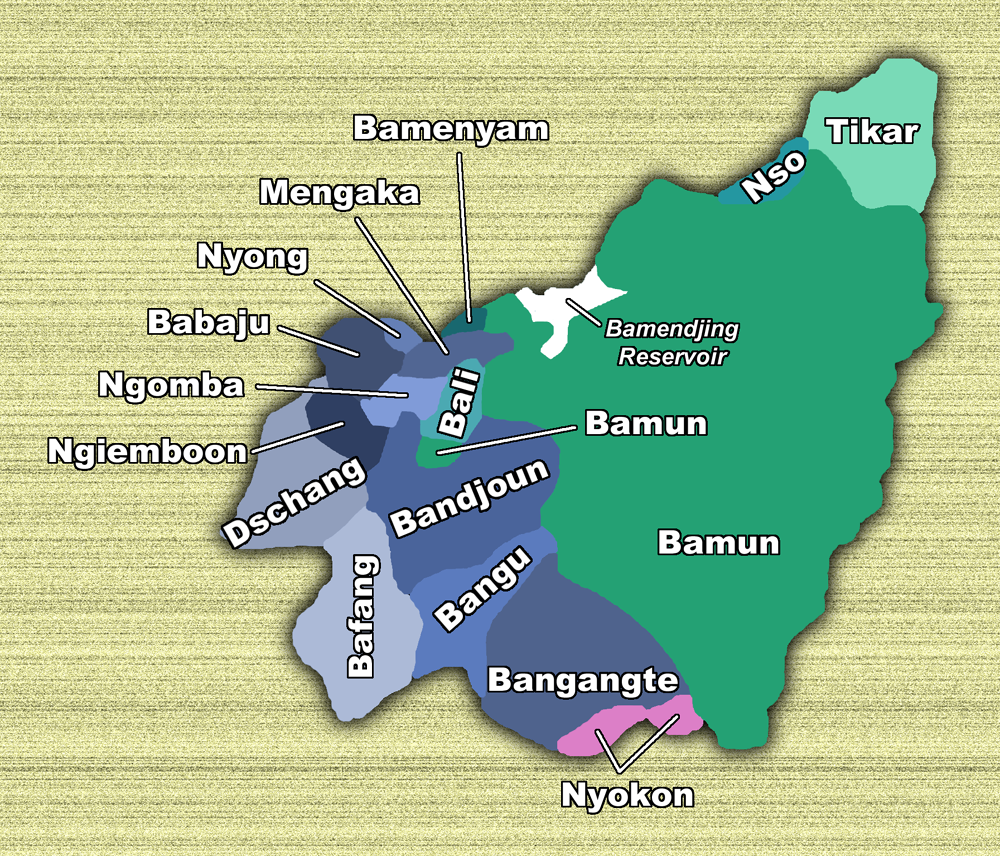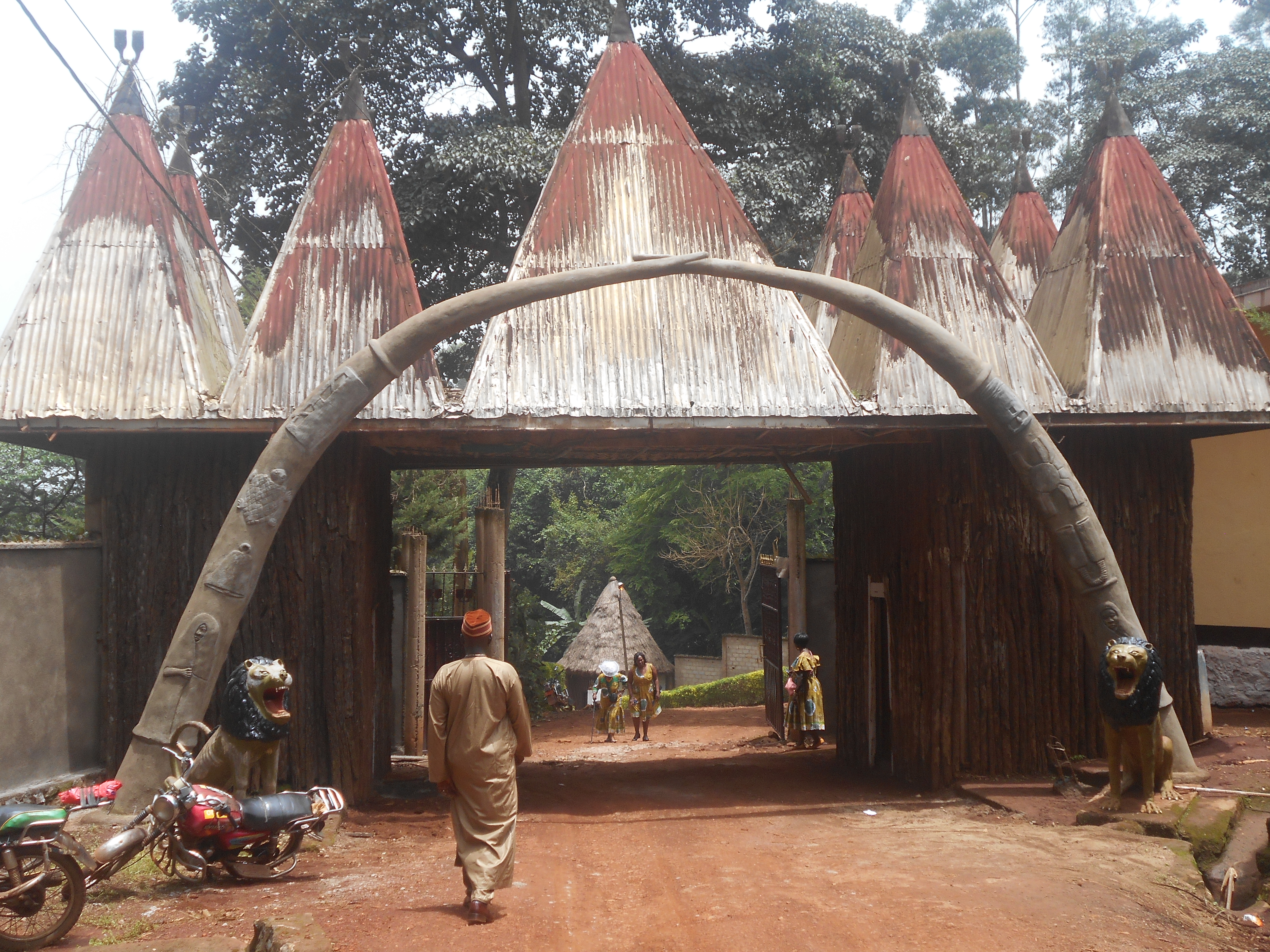|
Dschang
Dschang is a city located in the West (Ouest) Province of Cameroon, with an estimated population of 87,000 (est) in 2001, growing dramatically from 21,705 recorded in 1981. The 2006 Population is estimated to be 200,000 inhabitants. Dschang is the capital of the division of Ménoua. The Bamiléké are the predominant ethnic tribe. History Colonial era The documented history of Dschang began in 1895, when it was invaded by a German military mission. In 1909, the city replaced Fontem as the capital of a Germany military district. The region where Dschang now exists was then not the place of any major settlement but, instead, was an area that two bordering chiefdoms fought over. The name Dschang translates to "dispute" in the local language. Following Germany's defeat during World War I, Cameroon became both a British and French possession, France declared Dschang to be the capital of West Province, and developed the city's vacation resort in the 1940s. This resort now forms ... [...More Info...] [...Related Items...] OR: [Wikipedia] [Google] [Baidu] |
University Of Dschang
The University of Dschang is located in the town of Dschang, West Cameroon, about 425 kilometers northwest of Yaoundé. It has its roots in three agricultural training schools, and evolved from an agricultural institution to a university in 1993. In 1977, the Government of Cameroon authorized the creation of university centers at locations in Cameroon. The University Center at Dschang (UCD), was created by Presidential Decree No. 77/108 of April 28, 1977. In May 1978, ENSA (Ecole Nationale Supérieure Agronomique) in Yaounde and the Institute for Agricultural Technologies in Dschang were incorporated into the UCD. ENSA was to be transferred to Dschang as soon as possible. These two institutions were later merged into a single academic entity "The National Institute of Rural Development". In 1979–80, the US government, in exchanges with the Cameroon government, decided to provide assistance to UCD. In 1981, the University of Florida was selected on a competitive basis to design ... [...More Info...] [...Related Items...] OR: [Wikipedia] [Google] [Baidu] |
West Province, Cameroon
The West Region () is 14,000 km2 of territory located in the central-western portion of the Republic of Cameroon. It borders the Northwest Region to the northwest, the Adamawa Region to the northeast, the Centre Region to the southeast, the Littoral Region to the southwest, and the Southwest Region to the west. The West Region is the smallest of Cameroon's ten regions in area, yet it has the highest population density. As home to the enterprising Bamum and Bamileke kingdoms, the West is an economic bright spot and one of Cameroon's more developed regions. This progressive development is tempered by the strong traditional culture that persists among the Bamileke and the province's other major ethnic group, the Bamum (sometimes ''Bamoum'', ''Bamun'', ''Bamoun''). Geography Land The West sits at the geologic crossroads of Cameroon; the soil varies greatly within a relatively small land area. The land along the Noun River and at the Bamendjing Reservoir, for example, ... [...More Info...] [...Related Items...] OR: [Wikipedia] [Google] [Baidu] |
West Region (Cameroon)
The West Region () is 14,000 km2 of territory located in the central-western portion of the Republic of Cameroon. It borders the Northwest Region to the northwest, the Adamawa Region to the northeast, the Centre Region to the southeast, the Littoral Region to the southwest, and the Southwest Region to the west. The West Region is the smallest of Cameroon's ten regions in area, yet it has the highest population density. As home to the enterprising Bamum and Bamileke kingdoms, the West is an economic bright spot and one of Cameroon's more developed regions. This progressive development is tempered by the strong traditional culture that persists among the Bamileke and the province's other major ethnic group, the Bamum (sometimes ''Bamoum'', ''Bamun'', ''Bamoun''). Geography Land The West sits at the geologic crossroads of Cameroon; the soil varies greatly within a relatively small land area. The land along the Noun River and at the Bamendjing Reservoir, for example, ... [...More Info...] [...Related Items...] OR: [Wikipedia] [Google] [Baidu] |
Menoua
Menoua is a department of West Province in Cameroon. The department covers an area of 1,380 km and as of 2019 had a total population of 276,000. The capital of the department lies at Dschang. Subdivisions The department is divided administratively into 7 communes and in turn into villages. Communes # Dschang (urban) # Dschang (rural) # Fokoué # Fongo-Tongo # Nkong-Zem Nkong-Zem is a town and commune in Cameroon. See also *Communes of Cameroon The Divisions of Cameroon are the third-level units of administration in Cameroon. They are organised by divisions and sub divisions of each province (now Regions). ... # Penka-Michel References Departments of Cameroon West Region (Cameroon) {{WestRegionCM-geo-stub ... [...More Info...] [...Related Items...] OR: [Wikipedia] [Google] [Baidu] |
Bafoussam
Bafoussam is the capital and largest city of the West Region (Cameroon), West Region of Cameroon, in the Bamboutos Mountains. It is the 3rd most important (financially) city in Cameroon, after Yaoundé and Douala. The ''communauté urbaine'' (Urban Community) of Bafoussam, is a decentralized territorial collectivity. Originally called Urban Commune of Bafoussam, the communauté urbaine (Urban Community) of Bafoussam, was born after the Presidential Decree N ° 2008/022 of January 17, 2008 and composed of three communes, namely: the Commune of Bafoussam I (Bafoussam proper), the Commune of Bafoussam II (Baleng) and the Commune of Bafoussam III (Bamougoum). The city had an urban population of 347,517 inhabitants (at the 2008 Census). Bafoussam is the West Region (Cameroon), West Region centre of trade, and people are farming coffee, Potatoes, maize and beans. The city has also a coffee processing facility and brewery. It is the main city of the Bamiléké people and is home to the Ba ... [...More Info...] [...Related Items...] OR: [Wikipedia] [Google] [Baidu] |
Yemba Language
Yɛmba or Yemba, also Yémba or Bamiléké Dschang, is a major Bamileke language in West Region of Cameroon Cameroon, officially the Republic of Cameroon, is a country in Central Africa. It shares boundaries with Nigeria to the west and north, Chad to the northeast, the Central African Republic to the east, and Equatorial Guinea, Gabon, and the R .... It was approximately spoken by 500,000 or so people in the country in 2023. Despite originally being exclusively a spoken language, Yemba writing was developed by Maurice Tadadjeu (co-creator of the General Alphabet of Cameroon Languages) and Steven Bird. Their team developed a small Yemba–French Dictionary covering French translations of over 3,000 Yemba words and expressions. The Mmuock dialect also has a proposed orthography. Phonology Consonants * Sounds /t͡ʃ ʃ ʒ/ are included as phonemes in some analyses. In most analyses, they are considered as allophones of /t͡s s z/. * Sounds l ɣare consonant a ... [...More Info...] [...Related Items...] OR: [Wikipedia] [Google] [Baidu] |
Fontem
Fontem is a sub division in the Lebialem division of Cameroon. Consisting of three Fondoms, Lebang, the biggest, Essoh Etah and Fotabong III. Its headquarters are at Menji, they are located in the South West Region, and are west of Dschang and Bafoussam. Culture Fontem and the surrounding areas are home to the Bangwa people(one of the Lebialem tribes). Medicine It is the site of Mary Health of Africa Mission Hospital. Mary Health of Africa Hospital is a 120-bed hospital that also has an extensive outpatient service and runs a dispensary in nearby Fonjumetaw. It specializes in treating infectious tropical conditions, especially malaria, sleeping sickness African trypanosomiasis is an insect-borne parasitic infection of humans and other animals. Human African trypanosomiasis (HAT), also known as African sleeping sickness or simply sleeping sickness, is caused by the species '' Trypanosoma b ..., TB, typhoid fever, and HIV. Education Fontem is home to several p ... [...More Info...] [...Related Items...] OR: [Wikipedia] [Google] [Baidu] |
Yaoundé
Yaoundé (; , ) is the Capital city, capital city of Cameroon. It has a population of more than 2.8 million which makes it the second-largest city in the country after the port city Douala. It lies in the Centre Region (Cameroon), Centre Region of the nation at an elevation of about 750 metres (2,500 ft) above sea level. The outpost of Epsumb or Jeundo was founded between the Nyong River, Nyong and Sanaga River, Sanaga rivers of Cameroon, rivers at the northern edge of the area's forests in 1887 by German explorers as a trading base for rubber and ivory. A military garrison was built in 1895 which enabled further colonization. After Imperial Germany's defeat in World War I, French Third Republic, France held French Cameroon, eastern Cameroon as a League of Nations mandate, mandate, and Yaoundé was chosen to become the capital of the colony in 1922. Douala remained the more important settlement, but Yaoundé saw rapid growth and continued as the seat of government for the Re ... [...More Info...] [...Related Items...] OR: [Wikipedia] [Google] [Baidu] |




